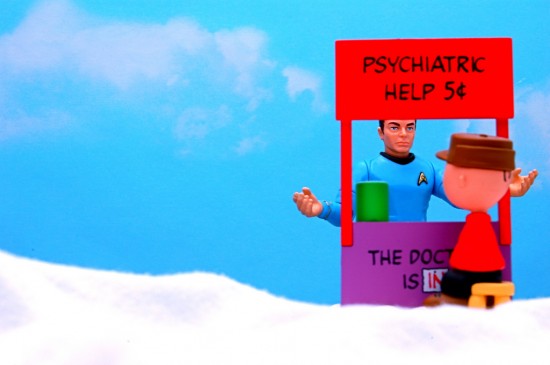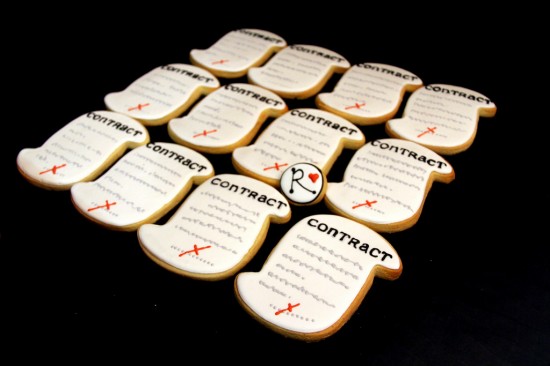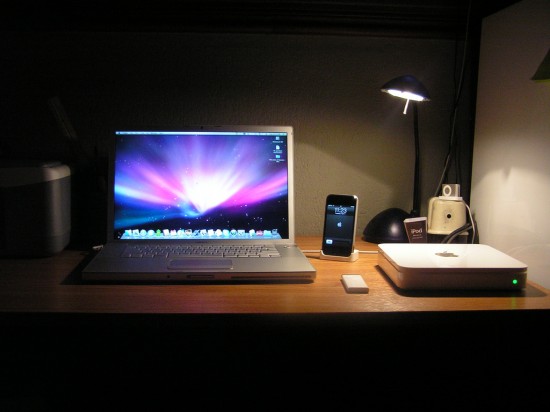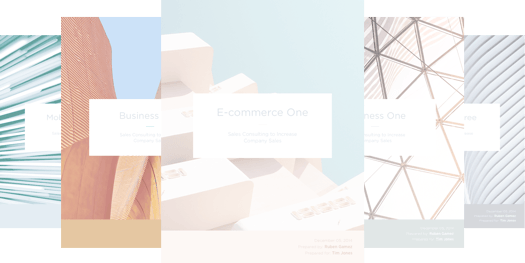This is a guest post by Jen Gordon, a user interface and interaction designer who also teaches how to create landing pages that convert like crazy. When she’s not busy pushing pixels she enjoys writing about design, and many other things that have absolutely nothing to do with a computer.
Now in my 10th year as a freelance designer helping entrepreneurs and marketers, it’s both exciting and horrifying to look back on times in my career where I enjoyed both great success and failure.
Yes, you’re taking advice from someone who has failed not once or twice, but many times. And, even though many of my failures have ironically resulted in very rewarding experiences, my hope is with this post you can avoid a few of my mistakes or validate decisions you are making in your own freelance career.
Think of this article as a quiz. Are you a newbie-freelance-mistake-making-machine? Find out!
Do you trust your gut?
If you get a weird vibe from a potential client – RUN. I can’t get any more specific than that. It’s just a feeling you get when you meet a person for the first time, hear their story, what they’re wanting to accomplish. We all get “a feeling” in situations like this. You know this feeling. And let’s face it – our intuition is an important decision-making tool in business!
Maybe it’s the work itself. It’s not a great fit for your skillset. Or perhaps it’s the client’s personality. Speaking as a graduate of the School of Hard Knocks, every time (and I mean EVERY TIME) I’ve had a bad vibe on a project or a potential client and didn’t trust my gut – I’ve failed ironically gained a valuable experience.
Are you being true to yourself and your talents?
I’ve been the world’s worst when it comes to this! I wanted to be everything to everybody both as a designer and a business person. The truth is I’m not an illustrator. The truth is I’m not a Yale grad. For me, I need a certain level of informality in my client relationships and total transparency around my gifts as a designer.
Whatever you need to be YOU, let it be known! Don’t be afraid to let your personality flow when working with clients. It’s the personal touch (your brand) that keeps them calling you over the fuddy-duddy down the street.
Do you back up your data?
The horror of lost data. Ugh! Losing precious work files is like watching Amityville, Carrie, and the Exorcist at the same time.
I’m embarrassed to admit I’ve learned this the hard way – twice! It’s embarrassing because it’s so simple to backup your data. My problem is I don’t think about the techie, networked blah blah side of my business (like many designers) until something blows up in my face and I find myself sprawled on the floor – crying. It’s a pretty awful sight.
When you’re working for yourself, backing up your data is your responsibility and duty to yourself – and your clients. Plain and simple. Make it a priority. Here are some services I’ve either used or am currently researching:
Dropbox – This is my go-to backup plan. I’ve invited some friends to use it and earned around 20GB of free storage as a result. It is reliable and it just works.
Google Drive – Google Drive is an inexpensive option at $4.99/mo for up to 100GB of storage. I’ve used the service and was happy with it, but found the syncing to be slower than Dropbox.
CrashPlan or Carbonite – I’ve recently been researching storage options for large quantities of data. Large like 4TB+ quantity of storage large. Dropbox is perfect for current projects and data that I need to access on a regular basis, but I still have terabytes of data from old clients that I don’t trust staying accessible on the many old hard drives I have lying around.
And for $4/mo for unlimited data you can’t beat the price. CrashPlan also offers a “Seeded Backup” where you to send them your hard drives of data, where they copy that data over so you’re not spending weeks uploading all of your data. Definitely an option to consider if you’re looking for a home for large volumes of data.
Are you working with your ideal client?
When I started my career as a freelance designer, I was eager to work – with anyone! When you’re new on the scene it’s easy to fall in to this thinking. You need work, and income. You rationalize that you just want the experience, and that you really can’t afford to be picky.
Listen to me carefully. I understand this thinking. I really do. But the sooner you can sort out the type of clients and work that gets you excited about work in the morning, the better.
We each have to learn to work with all types of people. If a potential client doesn’t jive with you *before* the contract is signed, they may not be your ideal client. And, with freelance contracts often being one-time projects, there’s a good chance the the relationship won’t have time to develop and improve over time.
Rarely do you have time to sort out relational issues, unless you sign a long term contract. For short term projects, it’s great if you can choose clients that you can just run with, without the friction of relational conflict that may show itself early on. It was only after I burned out on a couple of “un-clients” that I discovered exactly what I was looking for in my ideal client. You may have to go through this process too.
Do you have a budget for your business?
When you initially go out on your own there is sometimes a sense of urgency to “get everything” you need to run your business. At least for me there was, but I’m a total techno geek / gadget freak. 🙂 Knowing what I know it still pains me to say this, but think Lean Startup and resist this urge.
Believe me, the credit card get bloated and suddenly those shiny new purchases are looking like huge liabilities. Figure out the bare minimum you need to make the business run smoothly, and then write down a wish list of things you’d like to add on in the future. It’s a great motivator to keep plugging along!
Are you marketing yourself as “We” rather than “I”?
If you’re a one-wo/man shop, make sure your clients know this! It’s fine to run your freelance business under a corporate name, but sometimes clients are confused by this, thinking you have an entire staff working on various roles in projects. My advice is to be crystal clear on who you are, what you do, and what you DON’T do.
What happens when you’re not upfront about using a sub-contractor for a piece of the work? The tiniest problem with that contractor’s work is within your sphere of responsibility. If you have a subcontractor that consistently over-performs, you’re set. If not, my recommendation is if you can’t take on all of the project work personally, give the client the option of hiring out that work through another freelancer.
This goes back to defining your ideal client – if they’re looking for a one-stop-shop, they may not be the best fit for your business!
Do you have a signed contract before starting work?
Doesn’t matter how small or big the project, a contract, statement of work and deliverables list is a MUST before you start any project. How else will you and the client agree on expectations and payment terms?
I remember being nervous about asking clients to sign a contract before starting work. Now I look back and realize it was only because I was afraid I wouldn’t get the job. I now know that a client who won’t sign a contract is not my ideal client.
Do you create real value?
You probably do, but aren’t sure what that value is! Ask your current and former clients. Often they can articulate why they would work with you again better than you can yourself.
Want one way to always squash your competition? A way that works every time because almost no one does it? Over the top, outstanding customer service.
Think about it, we live in a customer no-service world. People are absolutely starving for attention from their vendors. So, if you want to stand out & create value – decide what defines great customer service for your clients, and do it!
Are you charging too much, or not enough?
Charging too little is an obvious pitfall. Charging more than the market bears for your talent is also a problem. I was in the market for offloading some design work a few months back and contacted a person who was less than a year out of design school, his portfolio was just so-so and the hourly rate he quoted me was $40. That’s a fine rate if your portfolio says “I do $40/hr work.” But his didn’t. His said “I do $20/hr work.”
So here’s how to sort it out. Take a look at what your peers are charging. And by peers I mean people whose work is of comparable quality. Are these peers getting steady work? There’s a good chance their rate is congruent with the services they are providing. It’s a good place to start.
Do you manage your time well?
Based on your best “work time” figure out a schedule that works for you and stick to it. No matter if you’re most productive at night or early am, establishing a routine for your workday is one way to measure your productivity and manage communication with your clients. For me, my “work/creative time” is in the morning. After lunch I work on tasks that don’t require my creative brain. This fluctuates some throughout the year, and I adjust accordingly.
Check out this technique Neville over at AppSumo uses to manage his days. Pretty cool.
What are your newbie freelancing mistakes?
I’m not the only one with freelancing disaster stories – right? 🙂 Leave a comment below and share your own experiences.
Image credits: JD Hancock, Iceman Forever, Anita Cadonau-Huseby, Fernando Castro






